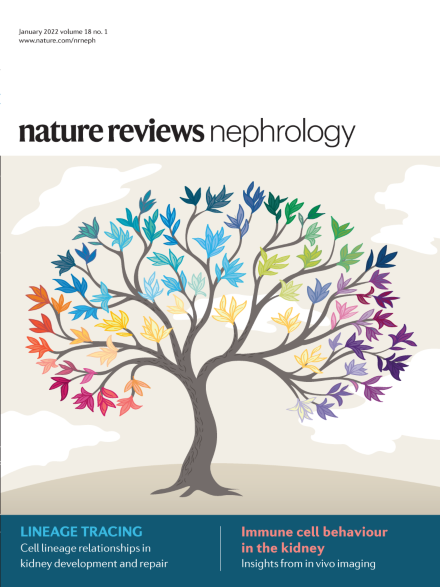基于rna的治疗肾病的机会。
IF 39.8
1区 医学
Q1 UROLOGY & NEPHROLOGY
引用次数: 0
摘要
在过去的十年中,基于rna的治疗策略已经从有希望的药物转变为一系列以前无法治愈的疾病的变革性治疗。这种转变在很大程度上是由对健康和病变组织中个体细胞类型和相应转录组的日益理解所驱动的。然而,尽管它们在肾脏中自然而丰富地分布,但成功的基于rna的肾脏疾病治疗方法很少,因为绝大多数给药药物要么迅速排泄,定位于非靶向细胞,要么由于内溶酶体区隔化而无效。在为这一重要器官开发基于rna的疗法方面取得的有限成功,导致人们对剪接调节、小干扰或激活rna、microRNA模拟物或拮抗剂、适体或编辑策略用于治疗肾脏疾病的靶向性和适用性产生了相当大的怀疑。为了提高基于rna的治疗的疗效和安全性,需要针对肾脏内的特定细胞类型和提高基于rna的药物的有效摄取的策略。尽管存在这些挑战,许多基于rna的治疗方法正在探索用于各种肾脏疾病,并有望在未来得到验证。本文章由计算机程序翻译,如有差异,请以英文原文为准。
RNA-based therapeutic opportunities for the treatment of kidney diseases.
In the past decade, RNA-based therapeutic strategies have transitioned from drugs of promise to transformative treatments for a range of previously untreatable diseases. This transition has largely been driven by a growing comprehension of individual cell types and corresponding transcriptomes in healthy and diseased tissues. However, despite their natural and abundant distribution to the kidney, successful RNA-based therapeutics for kidney diseases are scarce, as the overwhelming majority of administered drugs are either rapidly excreted, localize to non-targeted cells or are unproductive owing to endolysosomal compartmentalization. The limited success in developing RNA-based therapies for this vital organ have led to considerable doubt regarding the targetability and suitability of splice modulation, small interfering or activating RNAs, microRNA mimics or antagonists, aptamers or editing strategies for the treatment of kidney diseases. Strategies to target specific cell types within the kidney and improve the productive uptake of RNA-based drugs are needed to improve the therapeutic efficacy and safety of RNA-based therapies. Despite these challenges, a number of RNA-based therapeutic approaches are being explored for a variety of kidney diseases and hold promise for future validation.
求助全文
通过发布文献求助,成功后即可免费获取论文全文。
去求助
来源期刊

Nature Reviews Nephrology
医学-泌尿学与肾脏学
CiteScore
39.00
自引率
1.20%
发文量
127
审稿时长
6-12 weeks
期刊介绍:
Nature Reviews Nephrology aims to be the premier source of reviews and commentaries for the scientific communities it serves.
It strives to publish authoritative, accessible articles.
Articles are enhanced with clearly understandable figures, tables, and other display items.
Nature Reviews Nephrology publishes Research Highlights, News & Views, Comments, Reviews, Perspectives, and Consensus Statements.
The content is relevant to nephrologists and basic science researchers.
The broad scope of the journal ensures that the work reaches the widest possible audience.
 求助内容:
求助内容: 应助结果提醒方式:
应助结果提醒方式:


